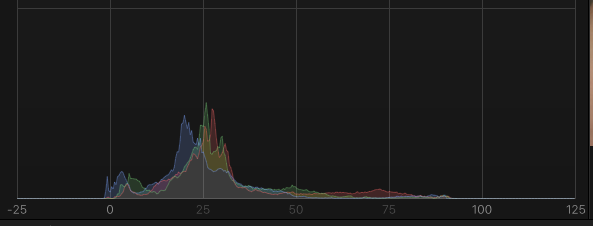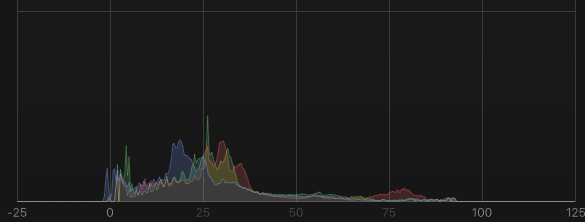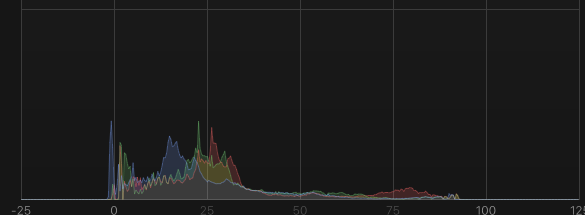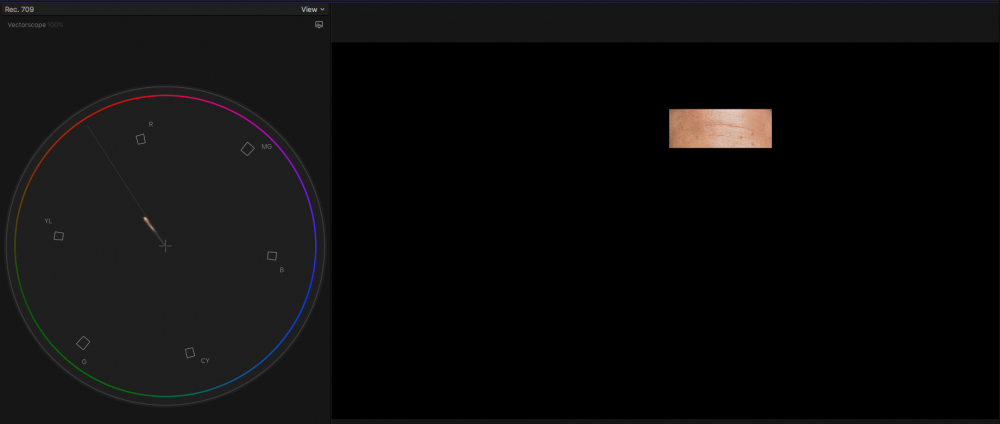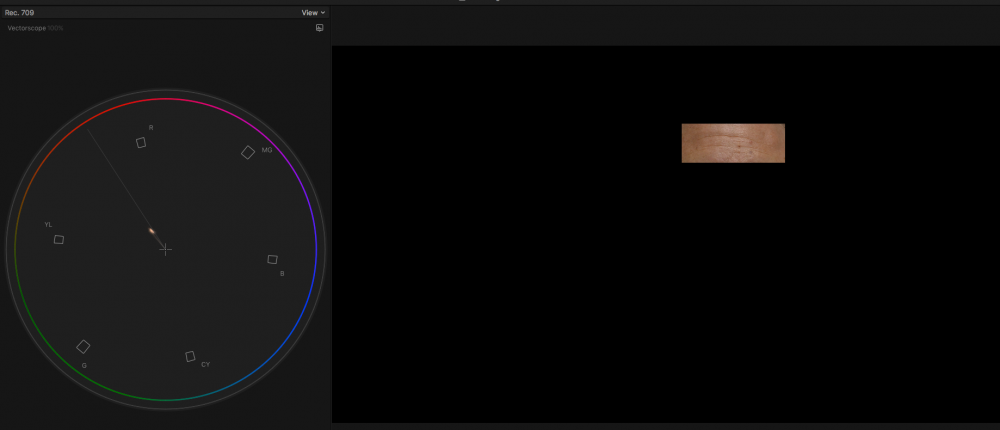-
Posts
6,355 -
Joined
-
Last visited
Content Type
Profiles
Forums
Articles
Everything posted by jonpais
-
I wouldn't even dignify Mr. Chris Sully Cortez's comment with a response.
-
So you can change several parameters simultaneously and view the results live... In camera, you'd have to stop recording, dive into the menu, and you are only able to change one at a time. Could it also adjust curves?
-
And everyone says it's the red channel you've got to watch out for with the Panasonics. Interesting. So, maybe I should be lowering saturation in camera? Also, I've read that reducing sharpening will help reduce noise, there's most certainly a correlation between the two as you say. But I haven't tested that for myself either. And in addition to the millions of possible combinations in camera, there's also the question of whether it's better to deal with noise in post with a plug in like Neat Video, or adding sharpening in post rather than in camera. So many variables! Edit: What's unusual, for me at least, is that the Cinelike D screen shot looks the flattest, the highlights (except for my t-shirt, which is blown out in all three) appear to be the most controlled, yet the histogram is showing that it's clipping the worst. Why is that, I wonder? BTW, I'm not standing at exactly the same distance from the light in each shot...
-
I like where you're going with this! i don't think it's as complicated as all that though. For picture profile, I'd choose the one with the greatest dynamic range, for sharpening, as sharp as possible in camera without ringing or haloing, and so on. But I still think everyone should do their own testing to see what works best for them, and if you've got an idea to make that easier... here are three more shots with the LED set at tungsten 3200 K, ISO 200, f/3.2. (1) Cinelike D, (2) Standard (3) Natural. Settings: Sharpening -3, NR -5. Even with tungsten, there's a peak in the blue channel in the shadows using Cinelike D, and with the other two profiles, there's a bump in the red channel in the highlights. Histograms (1) Cinelike D (2) Natural (3) Standard
-
I could also set my light to tungsten and do another test. Wish I had a model though! Maybe this afternoon I can get my hands on one (ha). I'm dying to know where you're going with this. I think you are our Thomas Edison or something.
-
If it makes any difference, I was using LED lighting set at 5600 K.
-
That was my initial guess too, but it would be strange for just one photo style to behave like that, no?
-
@BTM_Pix A few weeks back, I did a direct comparison under studio lighting between the same three profiles, and Standard and Natural were so much more contrasty than Cinelike D that if I ever were to shoot with them again, I'd probably dial exposure back, and I'm not sure ETTR would be a good idea with them. Would you mind having a look and teling me what you think?
-
Not sure I understand everything here, but after last night, I did begin to wonder just how accurate zebras actually are on these cameras, so good to know they're fairly reliable.
-
Yes, they may be 'toy' cameras, but with the right lenses, lighting, exposure and WB, they can really rock! The next hurdle for me is probably going to have to be color correction and grading.
-
V-Log on the GH5 has at least two stops more dynamic range than shooting Cinelike D on the G85, so you've got far more latitude for lifting the shadows in post. Edit: What I'd really be interested in seeing are some original clips shot with the GX80/85 or G80/85 (which few here seem to own!) underexposed, then with shadows lifted in post, along with the scopes, so we can compare to those with 'correct' exposure. A moderator here has said that great results can be had underexposing and lifting shadows with the lowly G7, that there's no banding or artifacts whatsoever, so I'd really appreciate if anyone can corroborate.
-
Nice work! So you filmed the pianist and the four singers? Today I shot in a mix of tungsten and daylight, which I really enjoy. It adds a touch of warmth. I also sat back a little from the balcony, so the light wasn't as harsh as the one at the coffee shop yesterday. I agree that 1/3 of a stop less for today's shot might have been best in this situation, mostly because of the radioactive shirt I was wearing. I still believe that many are really underexposing, so I hope others join in the conversation and share their clips and screen shots of the waveform monitors so we can all benefit.
-
I like that! Cheap 8 bit toy cameras. Would you mind sharing some of your FS7 footage so we can see what real pro stuff looks like?
-
I went ahead and shot a few more clips wearing the same notorious polo shirt. If anyone wants to download the file (actually, a screen shot), along with a picture of the waveform monitor and have a go at correcting it, feel free!
-
@Fredrik Lyhne That particular shirt is pretty bright. I didn't try grading the clip, but I can tell just by looking at it that that particular shirt is ridiculously ETTR resistant. For the record, up until only very recently, I'd been underexposing all my shots without being aware of it, so I confess to being a little gung-ho about ETTR. If only the G85 had just a touch more dynamic range! I'd really like to do a comparison between the Lumix and my X-T2 someday.
-
First of all, thanks everyone for taking the time to give feedback! Very interesting to read your responses, as well as being able to see comparisons between my work and that of Paul Leeming and Noam Kroll. @Arikhan I don't use AWB since it doesn't give consistent results, and because I'm usually shooting outdoors where the light is constantly changing, even during the course of a single shot, it would make CC troublesome, though some people seem to be having good luck with AWB. @mercer I use 100% zebras, not 90%, so I couldn't say at which f-stop the zebras would have disappeared in that scenario. For the very first exposure, my polo is completely covered with zebras on camera right. If the shirt had occupied a smaller portion of the screen, or if I'd been wearing a black shirt, I could have raised exposure even more. Because my understanding of ETTR is that you want to protect the important highlights, and that would include my shirt in this case. I changed exposure in increments of 1/3 of a stop, not full stops. @Fredrik Lyhne Gosh darn it, you're right! Paul's histogram is a little misleading, since it's obviously not representative of the light values in the image. While we're all focusing on the highlights, it's also important to remember that we're still exposing for the shadows as well, and if you look at the waveform monitor for what I consider to be a proper ETTR shot, the shadows are raised considerably above 0 IRE, whereas in the underexposed shots, the information is all bunched up in the lower portion of the scope. And whether my version is ETTR Lite or not, I hope these videos stimulate others to do their own tests. I also think it's too bright, which I think proves that it is definitely not a normal exposure, and in practice, I would also have chosen to expose a little bit darker. No one should blindly follow any one method, you've got to use good judgement as well.
-
@Axel @Orangenz @Fredrik Lyhne I did another more pathologically detailed test this afternoon, this time, along with glorious screen grabs of the waveform monitor, and a couple shots of the vector scope readings for both the ETTR clip and the grossly underexposed one to show how exposure affects skin tones. To my way of thinking, the vector scope is showing far greater color information in the ETTR shot, and it's practically sitting on the skin tone line, so I don't see why it would give someone any trouble grading. As I've said before, I think proper WB in camera is key to good skin tones.
-
@Orangenz @Fredrik Lyhne @Axel
-
I am in the process of applying Neat Video to the shot that's underexposed by 1/3 of a stop (the one with the worst artifacts) and will be uploading it along with the same clip with no noise reduction to see how it affects macroblocking. Should be done in a few minutes, unless YT isn't cooperative this afternoon.
-
Just so you know, I'm joking here - but that would be a brilliant ploy to force buyers to purchase the $400.00 DMW XLR1 XLR adapter.
-
I've avoided buying variable ND filters up till now, thinking they degrade the image more than single value NDs, but I want to do more walk n talk videos where the light is always changing, and I'm thinking a fader (or adjustable) filter might be the answer. Continually changing the aperture during a shoot is not only disruptive, it also means moving the camera, whereas perhaps lightly turning the ND would be smoother. Not really sure, I've never owned a fader ND, and I haven't heard back from anyone on this yet. I could also always cut out small sections if they're a bit shaky.
-
There really are no hard and fast rules for anything, be it exposure, shutter speeds, stabilization and so on. I would think, however, that if you're shooting aperture priority, the shutter speed would constantly be changing, as would the smoothness or jitteriness of a shot (depending on the shutter angle), from the beginning to the end of each clip, as far as I understand it. So that couldn't be a desirable thing. I suppose if the subject were completely immobile, it wouldn't be a big deal. Edit: I did try shooting at higher shutter speeds twice in my life, once of some fancy motorbikes sitting outside a restaurant here, and again during my field test of the Olympus 75mm f/1.8, and I found the stuttering motion to be pretty disturbing.
-
Maybe it's me... I just finished watching a shootout between the Angry Photographer and Jason Lanier at midday on a horse farm in Lexington, Kentucky. Much of their shooting was outdoors on a sunny day in the shade. Jason regularly shot at ISO 100-200, whereas several of Ken Wheeler's shots, taken in the same lighting, were from between ISO 1600 and ISO 3200. I'm thinking perhaps Ken left his camera on automatic, because there's absolutely no reason to shoot at such high ISOs on a bright day. I've never used auto anything, so I have to ask @PannySVHS: when shooting aperture priority, do you even know what shutter speed the camera is selecting?
-
@Fredrik Lyhne I uploaded to YT directly from within Final Cut. I will be uploading the master file to YT tomorrow to see whether the macroblocking is still a problem.
-
It is really very slight, as I say in the video, I actually opened up the aperture just until there were zebras (@100%) on my t-shirt and used that as my ETTR shot. I am working on another, far more detailed video, which I hope to post very soon.



.thumb.png.2fed2aa6ce41b49c3b04ae0d79aea87f.png)
.thumb.png.549b22de01d5a0065eb2f3b9184f2627.png)
.thumb.png.79401ff784881b7fd695618ec7539fe0.png)
